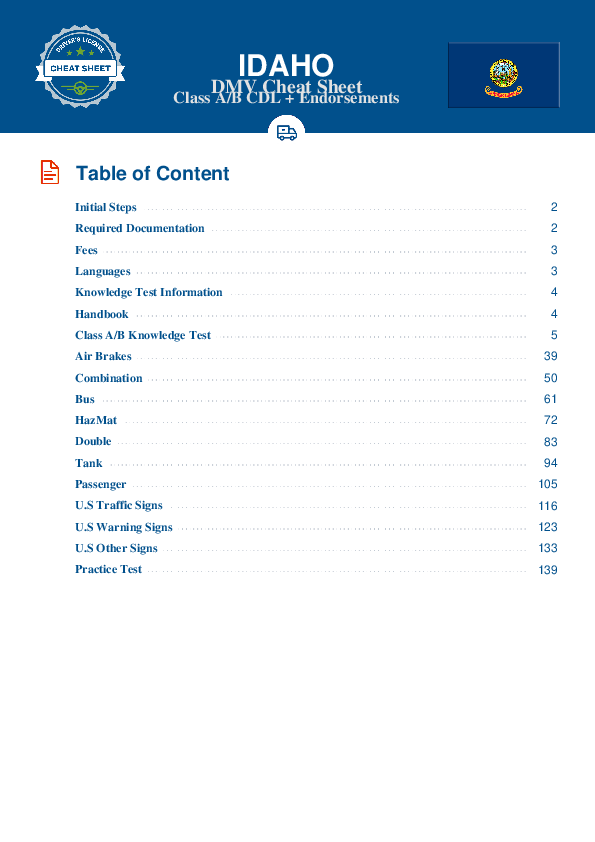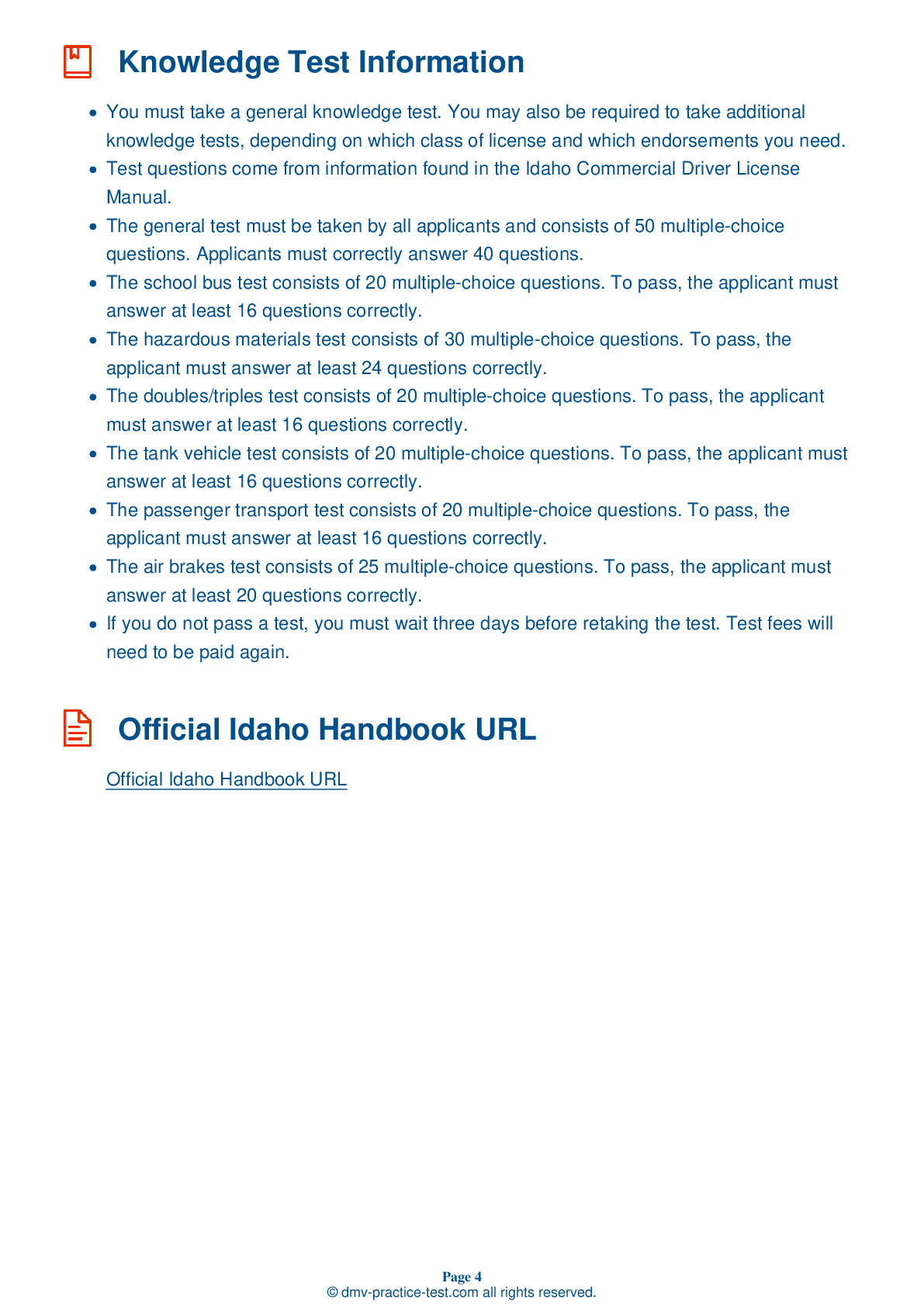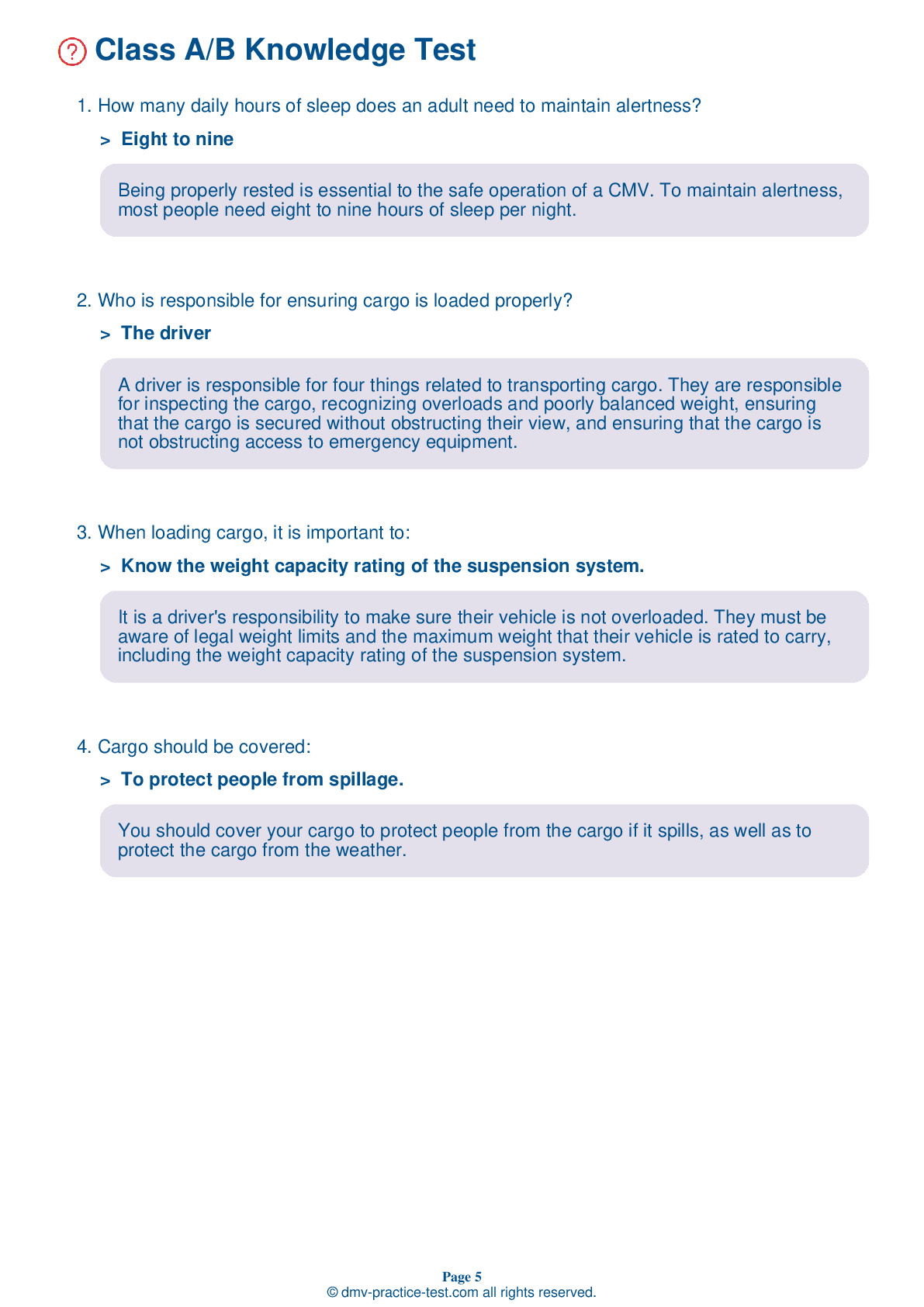Class A Driving Test | Idaho 2025 #1 Page 2 of 7
Train for FREE online with our Idaho class A license test. The official exam test consists of several obligatory parts, with all of them checking your knowledge of different blocks of road rules. If you need to obtain a ID CDL class A permit in 2025, practice as much as possible. Free sample tests published on our website will help you check and improve your knowledge and boost your grades. Please bear in mind that CDL class A requirements may vary from state to state.
8 . How can you check for a leak in hydraulic brakes?
Check hydraulic brakes by pumping the brake pedal three times before applying firm pressure to the pedal for five seconds. The pedal should not move. If it does, there may be a leak or some other problem in the braking system.
9 . After a tire has been changed, the driver should stop after a short distance to:
After changing a tire, you should stop a short distance later to recheck the tightness of the tire's lug nuts.
10 . In very hot weather, tires should be checked regularly because:
Because air pressure increases with temperature, you should pay special attention to the tire mounting and pressure when traveling in hot weather.
11 . Hydroplaning happens most often when:
Hydroplaning is most likely to occur when driving on wet roads with tire pressure that is too low and tire tread that is too worn. If there is enough water on the road, hydroplaning can occur at speeds as low as 30 mph.
12 . Regulations regarding commercial vehicle weight and load securement may vary from state to state. Regarding these regulations:
Federal, state, and local regulations governing commercial vehicle loads vary from place to place. Be sure that you are always aware of the laws for the state in which you are driving.
13 . A second conviction of operating a CMV with a blood alcohol content (BAC) of 0.04 percent or more will result in:
A first conviction of operating a CMV with a blood alcohol content (BAC) of 0.04 percent or higher will result in the loss of your CDL for one year. A second conviction of operating a CMV with a minimum BAC of 0.04 percent will result in the loss of your CDL for life.
14 . Exhaust system parts should be:
When inspecting an exhaust system, you should verify that parts of the system are not loose, broken, or missing. The system's parts must be properly mounted and should not be rubbing against moving parts of the vehicle.
See the exact questions that will be on the 2025 Idaho DMV exam.
99.2% of people who use the cheat sheet pass the FIRST TIME
Lillian MCcranie explains how our CDL study guide was helpful in passing the exam and recommends it to everyone.
Cameron tells us how he purchased the CDL exam, and found it to be a useful tool which helped him pass the exam and find a job.



